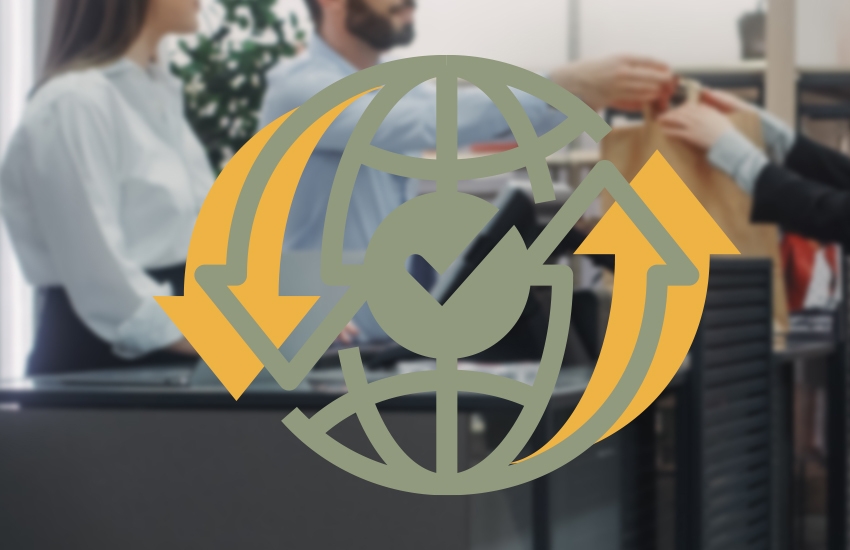Better Returns Management for a Better Planet
Returns are not only a financial burden for retailers but also pose a significant threat to the environment. But there's a better way for the planet and the bottom line.

‘Tis the season for returns! About 15% of all merchandise purchased during the holiday season is expected to be returned this year, according to the. NRF. That’s about $148 billion worth of product. In all of 2023, the NRF reports $743 billion in merchandise was returned with online sales seeing a higher return rate (17.6% of purchased goods) compared to brick-and mortar sales (10%).
Returns are not only a financial burden for retailers but also pose a significant threat to the environment. In 2022 alone, up to 9.5 billion pounds of returned products ended up in landfills, generating 27 million tonnes of carbon dioxide emissions – equivalent to one year's worth of driving for 5.9 million cars!
However, there's a glimmer of hope. By enhancing returns management practices, retailers can simultaneously boost their profit margins and reduce their carbon footprint. In this blog, we'll explore how effective reverse logistics can positively impact sustainability, outlining strategies for retailers to embrace a more environmentally conscious approach.
Reverse Logistics’ Environmental & Economic Impact for Retailers
Reverse logistics, encompassing activities such as returns management, repair, refurbishment, repackaging, recycling, and material harvesting, plays a crucial role in the profitability of retail and ecommerce. Particularly during peak returns season (after the holiday rush), a well-executed reverse logistics strategy becomes vital in preventing revenue loss and maintaining customer satisfaction.
Efficient reverse logistics contributes to environmental and economic benefits for companies. It reduces waste, conserves resources, and enhances customer satisfaction by managing product returns, repairs, recycling, and disposal effectively. Embracing channel-free reverse logistics not only aligns with sustainability goals but also provides cost savings and a competitive advantage in the market.
5 Ways to Improve Returns Management & Sustainability
1. Efficient Returns Processing: Investing in modern technology – such as automated returns processing systems – expedites inspections, refurbishments, and restocking of inventory. This reduces costs while optimizing inventory turnover. It also puts more inventory back on the shelf faster, increasing full-price selling days and reducing material sent to landfills.
2. Optimized Inventory Management: Seamlessly integrating returned products into the inventory management system minimizes write-offs and prevents unnecessary stock accumulation. This integration is essential for ensuring product is sent where it is needed rather than taking up warehouse or landfill space.
3. Data-Driven Insights: Utilize data analytics to gain insights into return patterns, product performance, and customer behavior. Informed decisions based on these insights can enhance profitability and reduce overstocks. It can also improve routing and warehousing of products, which reduces carbon emissions because merchandise will have to travel less distance. Additionally, by tracking data, manufacturers may be able to improve future product design by considering customer feedback and understanding why products were returned in the first place. This will ultimately reduce waste in the future as less products would be returned.
4. Sustainable Disposition of Returns: Implement environmentally conscious strategies for the disposition of returned products. Refurbishing, repackaging, or reselling items reduces waste and maximizes the value of returned inventory.
5. Seamless Reverse Logistics Network: Establishing an efficient reverse logistics network ensures smooth transportation of returned products, reducing transportation costs and emissions by optimizing traffic of products in both directions.
Transforming reverse logistics/re-commerce/returns management processes to cut losses, save products from being destroyed, and improve profit margins.
The Fillogic Effect
Fillogic, a leading provider of channel-free, local market logistics, presents a model that not only improves profit margins but also contributes to a more circular, sustainable retail ecosystem. Through an end-to-end logistics approach, Fillogic can reduce the time it takes for returned products to be available for resale from weeks to days – up to 200% faster than traditional methods and at a 50% reduction in cost.
Fillogic's impact is significant:
Reduced landfill waste: In 2022, Fillogic kept 18 tons of materials out of landfills.
- Because of the quality control/quality assurance work done in Fillogic Hubs, less than 1% of returned products are landfilled, compared to 58% business-as-usual
Lower carbon emissions: Fillogic avoided 65 million tons of carbon dioxide emissions, contributing to an eco-friendlier supply chain.
- Because the Hubs are located near where customers live and work, there is a 50% reduction in distance to the end consumer, resulting in a 20% reduction in transport emissions over traditional reverse logistics solutions.
Higher profit margins: Fillogic’s reverse logistics solution adds, on average, 28 full-price sales days for each return by processing them faster.
Revitalized existing infrastructure: Fillogic is housed in already-built malls/shopping centers, which reduces newly built warehousing and cuts down on required warehouse space for retailers’ inventory by 5 times.
- This model also reduces the need for raw materials used an saves 80% emissions saved through reduced square footage
By leveraging underutilized space in shopping malls or retail centers, Fillogic creates tech-enabled micrologistics hubs, offering full-service localized logistics. These hubs play a crucial role in intercepting returns in the middle and final mile, conducting on-site quality control/assurance, and significantly reducing the miles a returned product travels. Additionally, because Fillogic helps retailers allow for in-person returns of items purchased online, it helps reduce packaging material in landfills and lowers carbon emissions by up to 40%.
Therefore, embracing efficient returns management through strategies like those offered by Fillogic not only improves profit margins but also aligns with sustainability goals. As retailers prioritize sustainable practices, reverse logistics becomes a key component of modern supply chain management, contributing to a more circular and environmentally-friendly retail ecosystem.
Ready to improve your sustainability and profit margins? Contact us today!